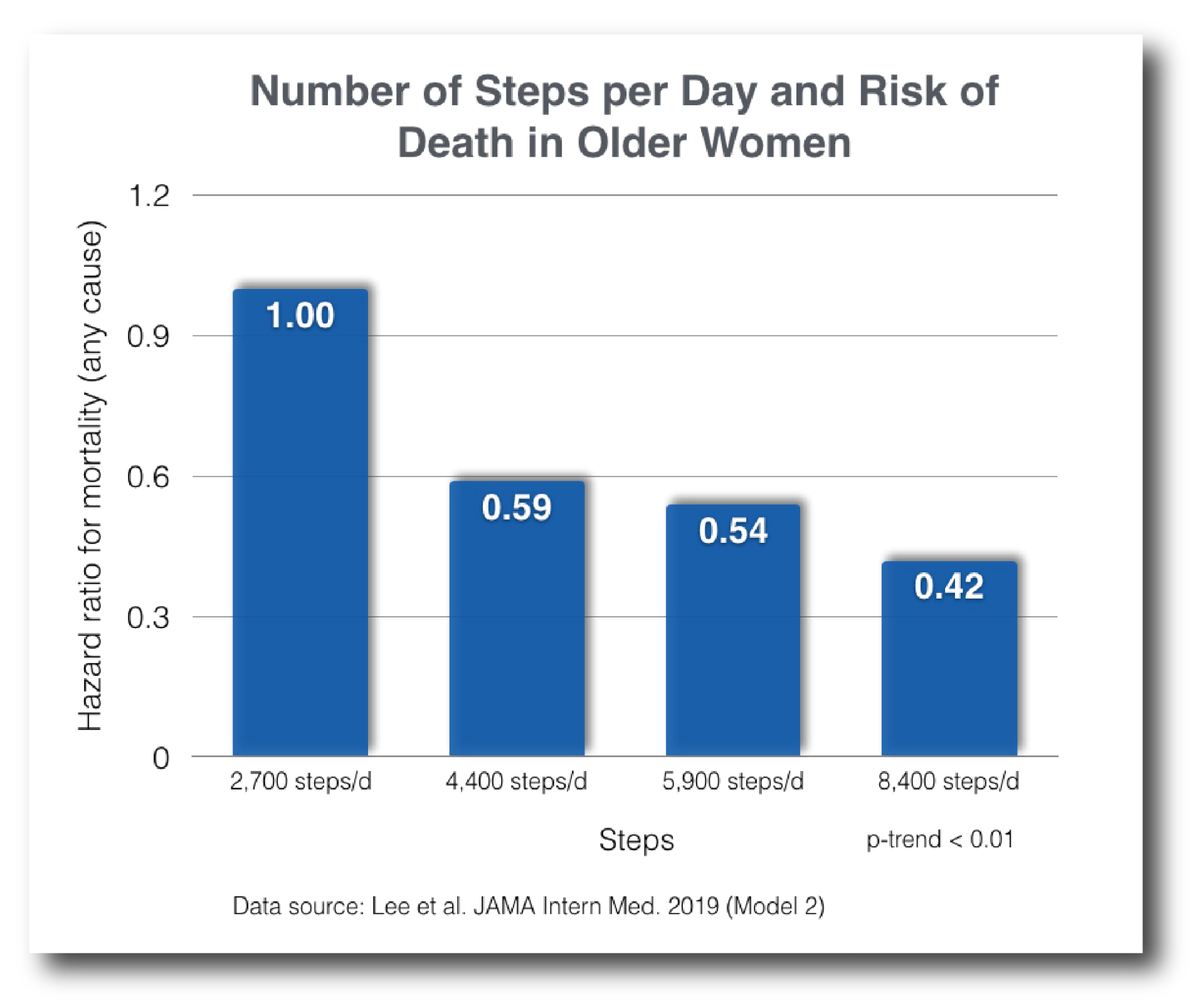A new study further confirms the health benefits of lacing up your shoes and heading out for a walk. The study, published today in JAMA Internal Medicine, followed over 16,000 older women for an average of five years and compared recorded step counts with deaths that occurred in the group over that time.
The researchers found that – in this group of women with an average age of 72 years – taking around 4,400 steps or more per day was linked to a significantly lower risk of dying compared to taking 2,700 or fewer steps per day. And women getting the most steps per day (around 8,400) had a nearly 60 percent lower risk of death compared to those getting the least (around 2,700).

For every 1,000 steps per day added over 2,000, risk of dying dropped by around 15 percent, with little added benefit over 7,500 steps.
The intensity of walking – essentially how quickly the women took their steps – didn’t seem to make a real difference to the results. So, an easier pace or harder pace both had similar benefits.
As the researchers note, 10,000 steps per day is a commonly used physical activity goal. It translates to around 5 miles of walking, which even gathered across a full day can be hard for many people to meet. Even at a brisk pace, that’s about an hour and 40 minutes of walking per day.
This study in older women, though, suggests that real benefit can come from more modest amounts of walking, which may be easier to fit in to a normal day. While getting 10,000 steps each day is a wonderful goal, and can bring many health benefits, it shouldn’t deter people either. This study – and others – suggests that more modest amounts of activity can also have benefit. The important thing is to fit in whatever amount of activity you can. Any is better than none.
Writing in their article, the researchers conclude:
“These findings may serve as encouragement for the many sedentary individuals for whom 10,000 steps per day pose an unattainable goal.”